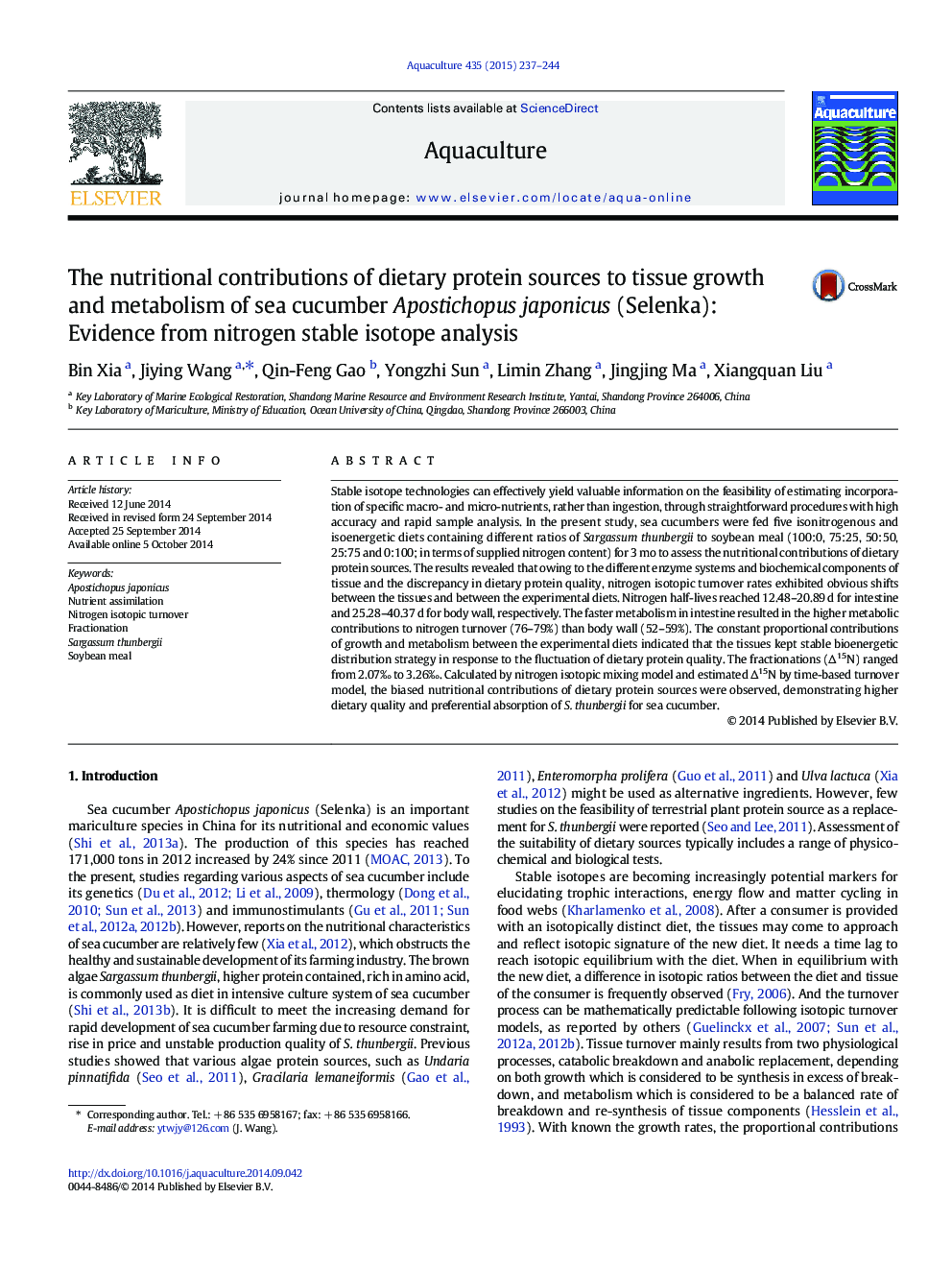| Article ID | Journal | Published Year | Pages | File Type |
|---|---|---|---|---|
| 8494895 | Aquaculture | 2015 | 8 Pages |
Abstract
Stable isotope technologies can effectively yield valuable information on the feasibility of estimating incorporation of specific macro- and micro-nutrients, rather than ingestion, through straightforward procedures with high accuracy and rapid sample analysis. In the present study, sea cucumbers were fed five isonitrogenous and isoenergetic diets containing different ratios of Sargassum thunbergii to soybean meal (100:0, 75:25, 50:50, 25:75 and 0:100; in terms of supplied nitrogen content) for 3Â mo to assess the nutritional contributions of dietary protein sources. The results revealed that owing to the different enzyme systems and biochemical components of tissue and the discrepancy in dietary protein quality, nitrogen isotopic turnover rates exhibited obvious shifts between the tissues and between the experimental diets. Nitrogen half-lives reached 12.48-20.89Â d for intestine and 25.28-40.37Â d for body wall, respectively. The faster metabolism in intestine resulted in the higher metabolic contributions to nitrogen turnover (76-79%) than body wall (52-59%). The constant proportional contributions of growth and metabolism between the experimental diets indicated that the tissues kept stable bioenergetic distribution strategy in response to the fluctuation of dietary protein quality. The fractionations (Î15N) ranged from 2.07â° to 3.26â°. Calculated by nitrogen isotopic mixing model and estimated Î15N by time-based turnover model, the biased nutritional contributions of dietary protein sources were observed, demonstrating higher dietary quality and preferential absorption of S. thunbergii for sea cucumber.
Related Topics
Life Sciences
Agricultural and Biological Sciences
Aquatic Science
Authors
Bin Xia, Jiying Wang, Qin-Feng Gao, Yongzhi Sun, Limin Zhang, Jingjing Ma, Xiangquan Liu,
